Easy Bluetooth Enabled Door Lock with Arduino + Android 2
This tutorial will explain a simple way to make a password protected Bluetooth door lock using your Arduino, which can be unlocked by sending a four-digit pin from your Android phone! The hardware setup is quite simple, and the programming side of it is a bit tricky, but should be no problem for any Arduino amateur.
Step 1: Parts Needed
- 2. Electric Door Strike.
3. Bluetooth Module.
4. Power Supply (Required voltage and amperage differs among different door strikes/locks)
5. TIP120 Transistor
6. 1N4001 Diode
7. Hook-up Wire
8. Solderless Breadboard
9. An Android phone (optional, considering that there are lots of devices you could use to send serial data to our Bluetooth modem including IPhone, computers, and other Bluetooth devices).
Step 2: About The Transistor

We’ll start by focusing on one of the main components of the circuit, the transistor. Our transistor will allow us to control a device that requires more current than our Arduino can supply, by sending the transistor different values. The type of transistor we are using (the TIP120) has a base, collector, and an emitter which are labelled here. We will send the signal from pin 9 on the Arduino to the base of the transistor, and depending on the value sent, current will increase or decrease.
Step 3: Assemble The Circuit

The diagram shows how the transistor is wired up in our circuit. As you can see, we have a diode pointed away from ground that is connected to the collector of the transistor as well as the ground of the lock itself. This diode will protect our electronics from any back voltage that might be created when our lock is turned off. At this point you could set pin 9 to high or low to control the lock.
Step 4: Adding Bluetooth

Adding a Bluetooth module to our project is very easy. Simply connect RX on the Bluetooth module to TX on our Arduino board, TX on the module is then connected to RX on the Arduino, GND is obviously connected to ground, and lastly VCC is connected to 3.3 volts or 5 volts depending on your Bluetooth module.
Step 5: Final Product (without the code)

Here is a look at what everything should look like. It’s a bit difficult to see everything, but this is just the completed circuit on the breadboard.
Step 6: The Code
The coding is a little tricky as I said in the intro, but I am a bit of a beginner with the Arduino so it should not be difficult for anyone to understand. Basically the Arduino will check to see if anything is being received through serial. If it is, it will read those chars into an array and from that point verify that what was received matches the password we defined. In my example the password defined is ABCD.
Step 7: Implementing Your Android Phone
On the app market, you can search for Bluetooth SPP (Serial Port Profile). There are many apps that have been made to send serial data through Bluetooth on your phone. Mine is called Bluetooth SPP just like 4 or 5 other apps that are similar and can be found by going to the link below. After you install one of these Bluetooth SPP apps, you can pair with your Bluetooth modem connected to the Arduino. If it asks for a key, it will usually be by default “1234” (without quotes of course). After that, you should be able to send ABCD and the door strike will unlock for around 5 and 1/2 seconds, and then lock itself again. This concludes my tutorial on making a Bluetooth enabled door lock. If you have any questions or corrections for my project let me know!
(Recommended) Bluetooth SPP App: https://play.google.com/store/apps/details?id=mobi.dzs.android.BluetoothSPP&feature=search_result#?t=W251bGwsMSwyLDEsIm1vYmkuZHpzLmFuZHJvaWQuQmx1ZXRvb3RoU1BQIl0.
Arduino Code
int lock = 9; //pin 9 on Arduino
char final[4]; //Characters the Arduino will receive
char correct[4] = {‘A’,’B’,’C’,’D’}; //User-Defined Password
int pass_correct = 0; //Does Password match, 0=false 1=true
void setup()
{
pinMode(lock, OUTPUT);
Serial.begin(9600);
digitalWrite(lock, HIGH); //By default, lock is active(locked)
}
void loop()
{
while(Serial.available())
{
for(int i=0; i<4; i++) //While data is available read 4 bytes
{
final[i] = Serial.read(); //Read 4 bytes into the array labled “final”
}
for(int i=0; i<4; i++)
{
if(final[i]==correct[i]) //Compare each char received to each car in our password in order
{
pass_correct = 1; //If we compare two chars and they match, set the pass_correct variable to true(1)
}
else
{
pass_correct = 0; //if the two compared chars do NOT match, set pass_correct variable to false(0)
break; //End loop and stop comparing chars
}
}
}
if(pass_correct==1) //If all chars compared match, deactivate(unlock) the lock for 5 seconds
{
Serial.println(“Unlocked”);
digitalWrite(lock, LOW);
delay(5000);
Serial.println(“Locked”);
pass_correct = 0;
}
else
{
digitalWrite(lock, HIGH); //Else if there was not a complete match, keep the lock high(locked)
}
/* FOR TESTING
Serial.print(final[0]);Serial.print(final[1]);Serial.print(final[2]);Serial.print(final[3]);
Serial.print(” | “);
Serial.print(correct[0]);Serial.print(correct[1]);Serial.print(correct[2]);Serial.print(correct[3]);
Serial.print(” “);
Serial.print(pass_correct);
Serial.println(“”);
*/
delay(500);
}


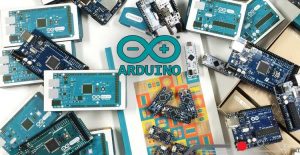
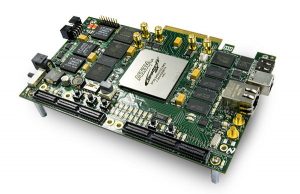



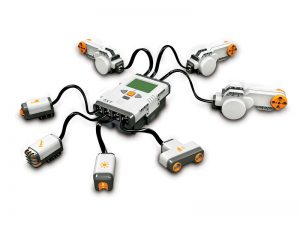




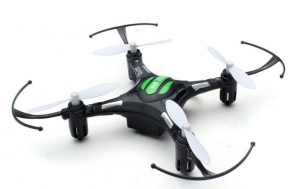

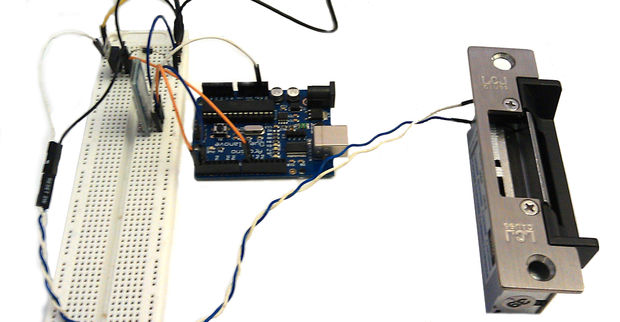
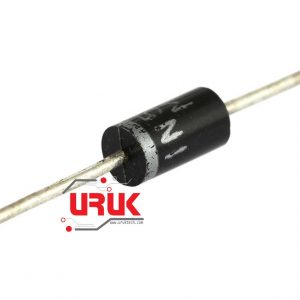

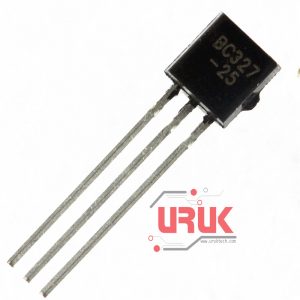


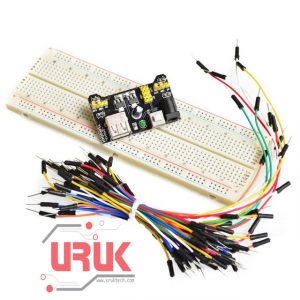







Please provide the transistor , the BC327 is not good for this experiment …. thank you 🙂
for short time operation it’s suitable, but for long time operation it need to changed